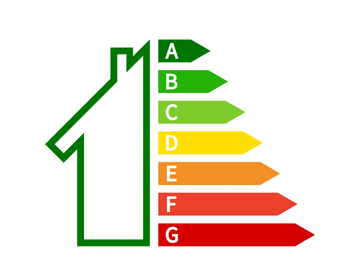The Energy Performance Certificate – is it here to stay?.

The Energy Performance Certificate (EPC) is the direct result of European Legislation. They were introduced because of the Energy Performance of Buildings Directive (EPBD) from the European Parliament in 2003. So, the question is, having left the EU three years ago, is the EPC going to be ditched as part of the bonfire of European legislation promised by the current government?
To answer that question, we need to remember why EPCs were introduced in the first place and how they are currently used.
Energy used in UK homes contributes 22% of UK carbon emissions and pretty much everyone now agrees that carbon emissions are a bad thing. Even if everyone in the UK were to drive around in an electric car, we would be a long way from tackling the climate change problem without addressing carbon emissions from the homes we live in.
But EPCs are used in another way – as a mechanism for calculating ‘fuel poverty’. In 2020 (even before the current fuel crisis), there were an estimated 13.2% of households (3.16m) in fuel poverty in England. Fuel poverty is the condition by which a household is unable to afford to heat (or cool) their home to an adequate temperature and is caused by a combination of low income, high fuel prices, poor energy efficiency, unaffordable housing prices, and poor-quality private rental housing. Now the cost of heating our homes is on the top of everyone’s agenda and is costing the treasury billions, one of the things we all need to know is ‘the miles per gallon’ equivalent for our homes. And that is where the EPC comes in.
EPCs were introduced in 2007, and whilst they have been through a few changes, they essentially provide a few key pieces of information:
- The energy efficiency rating of the property on a scale from A-G: based on running costs for heating, hot water, and lighting – a way to compare the energy efficiency of homes. A is good and G is bad – a bit like the rating on white goods.
- The environmental impact: a measure of the carbon emissions.
- The recommendations: the measures that could be installed cumulatively, to improve the energy efficiency rating.
The EPC has been a mandatory certificate with climate protection at its roots since it was introduced and, perhaps fairly, many wondered ‘what was the point’ since no one really bothered to look at them.
But as we have seen, the world is changing. Initially considered an irrelevance, that view started to change as the importance of the EPC rating determined access to grants and various incentive schemes to install renewable technologies and other energy efficiency measures such as roof and wall insulation. Such measures address carbon emissions and cost; while leaking heat may have not been so critical when energy was cheap, now it is on top of the political, social and economic agenda.
But EPCs are now going beyond a useful tool to access funding for improvement measures. According to Santander’s ‘Buying into the Green Homes Revolution Report’, buyers have said they are prepared to pay a higher price for an energy-efficient home. And Nationwide requires its valuers to consider the energy efficiency of a property as part of the valuation process. EPCs are getting interesting.
Already in the private rented sector, imposing minimum energy ratings on all UK homes could have quite an impact on the property market. This could make the EPC rating a stronger value driver in the market, although the recent energy crisis is likely to have started buyers thinking about this already.
So, although not a perfect measure of energy efficiency and liable to further change, we firmly believe that the EPC is here to stay.
It’s widely reported that the UK has one of the oldest and least efficient housing stocks in Europe, and if these two issues are to be addressed there must be a change in the quality of existing homes.
The government’s Net Zero Strategy: Build Back Greener, reported:
“Inefficient homes are more expensive to run. The Energy Efficiency Infrastructure Group estimate that upgrading all UK homes to EPC band C could provide annual energy cost savings of £7.5 billion.”
Properties below the minimum energy rating may become less desirable, however supply and demand must still be heavily factored into the equation. Then there’s the lending industry – what will their response be? Much like the current green mortgages, there will probably be an array of new products offering preferential rates or other incentives for more energy-efficient homes.
So, carbon reduction targets in the UK are going to impact the property market over the coming years, and the EPC report is at the centre of tracking that progress. As such, it will become increasingly more utilised and high profile in property transactions and access to government grants for home improvements.
